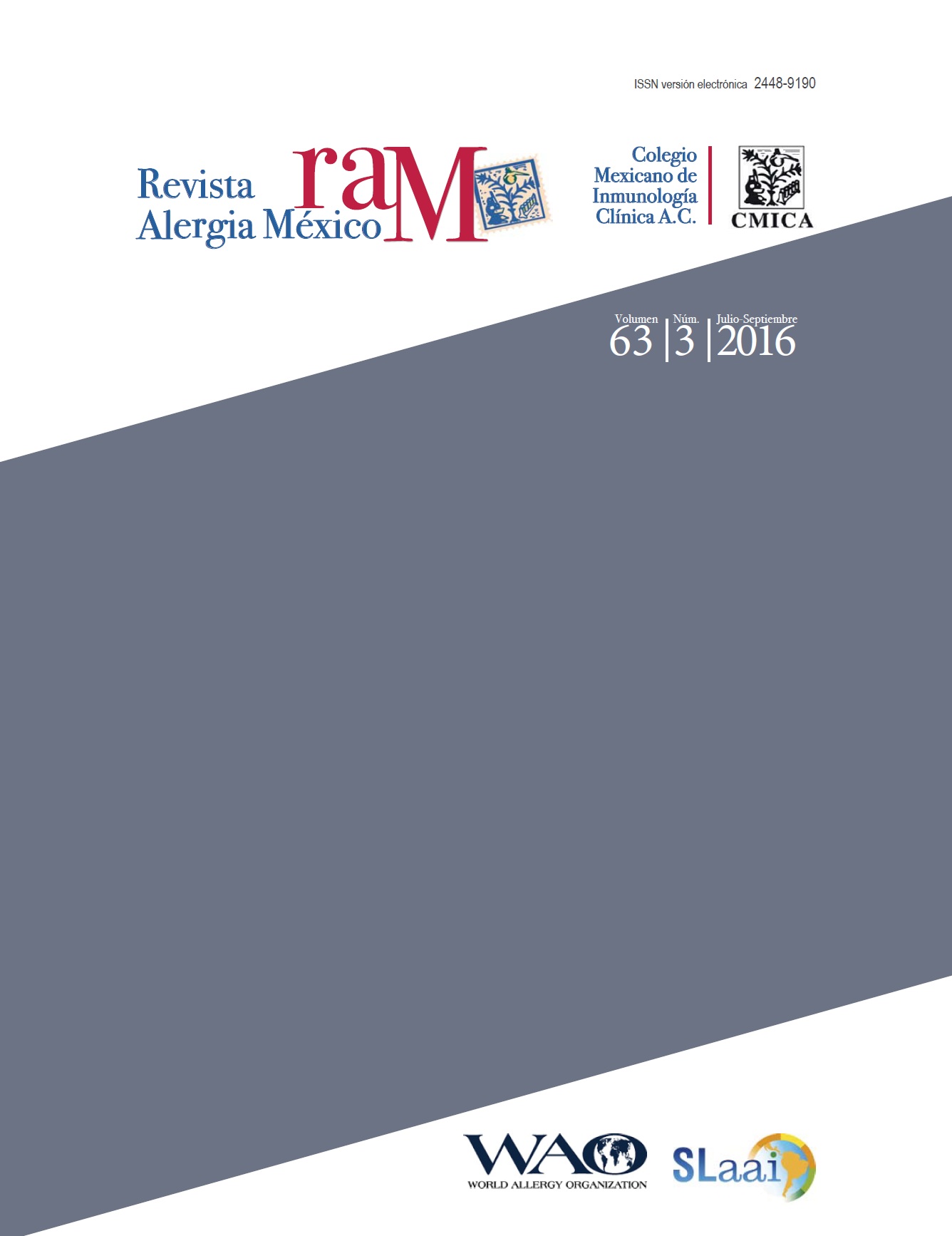Abstract
Background: The presence of allergic mucin in allergic fungal sinusitis (AFS) is a manifestation that identifies it as a hypersensitivity process. AFS has a phenomenon of cross-reactivity to IgE-bound proteins having at least two shared epitopes.
Case report: A 13-year-old male with nasal obstructive symptoms of three years of evolution. An obstructive mass was identified in the sinuses through physical examination and CT. In endoscopic surgery, the left nostril polyp was identified with the macroscopic appearance of allergic mucin; the polyp was resected. Final histopathological examination using periodic acid-Schiff and Grocott’s methenamine silver staining indicated Aspergillus. Two weeks after surgery, percutaneous tests showed sensitization to Alternaria, Helminthosporium sativum, and Deramatophagoides farianae with negativity to Aspergillus fumigatus.
Conclusions: The absence of significant titers of specific IgE antibodies to Aspergillus fumigatus was the evidence that the hypersensitivity response was triggered by a pathogen other than that isolated in histopathological study, which coupled with positive tests for other fungi may be explained by the cross-reactivity phenomenon in a phenomenon of likely hypersensitivity.
References
Altmann F. The role of protein glycosylation in allergy. Int Arch Allergy Immunol. 2007;142(2):99-115. DOI: 10.1159/000096114
Marple BF. Allergic fungal rhinosinusitis: current theories and management strategies. Laryngoscope. 2001;111(6):1006-1019. doi: 10.1097/00005537-200106000-00015
Schubert MS. Allergic fungal sinusitis. Clin Rev Allergy Immunol. 2006;30(3):205-216. doi: 10.1385/CRIAI:30:3:205
Aalberse RC. Structural features of allergenic molecules. Chem Immunol Allergy. 2006;91:134-46. doi: 10.1159/000090277
Bent JP, Kuhn FA. Diagnosis of allergic fungal sinusitis. Otolaryngol Head Neck Surg. 1994;111(5):580-588.
Hutcheson PS, Schubert MS, Slavin RG. Distinctions between allergic fungal rhinosinusitis and chronic rhinosinusitis. Am J Rhinol Allergy. 2010;24(6):405-408. doi: 10.2500/ajra.2010.24.3533
Shankar J, Gupta PD, Sridhara S, Singh BP, Gaur SN, Arora N. Immunobiochemical analysis of cross-reactive glutathione-S-transferase allergen from different fungal sources. Immunol Invest. 2005;34(1):37-51.
Rupa V, Jacob M, Mathews MS, Seshadri MS. A prospective, randomised, placebo-controlled trial of postoperative oral steroid in allergic fungal sinusitis. Eur Arch Otorhinolaryngol. 2010;267(2):233-238. doi: 10.1007/s00405-009-1075-8
Wark PAB, Hensley MJ, Saltos N, et al. Anti-inflammatory effect of itraconazole in stable allergic bronchopulmonary aspergillosis: a randomized controlled trial. J Allergy Clin Immunol. 2003;111(5):952-957.
Sacks P-L, Harvey RJ, Rimmer J, Gallagher RM, Sacks R. Antifungal therapy in the treatment of chronic rhinosinusitis: a meta-analysis. Am J Rhinol Allergy 2012;26 (2):141-147. doi: 10.2500/ajra.2012.26.3710
Mabry RL, Marple BF, Mabry CS. Outcomes after discontinuing immunotherapy for allergic fungal sinusitis. Otolaryngol Head Neck Surg 2000;122(1):104-106.

This work is licensed under a Creative Commons Attribution-NonCommercial 4.0 International License.
Copyright (c) 2016 Revista Alergia México

